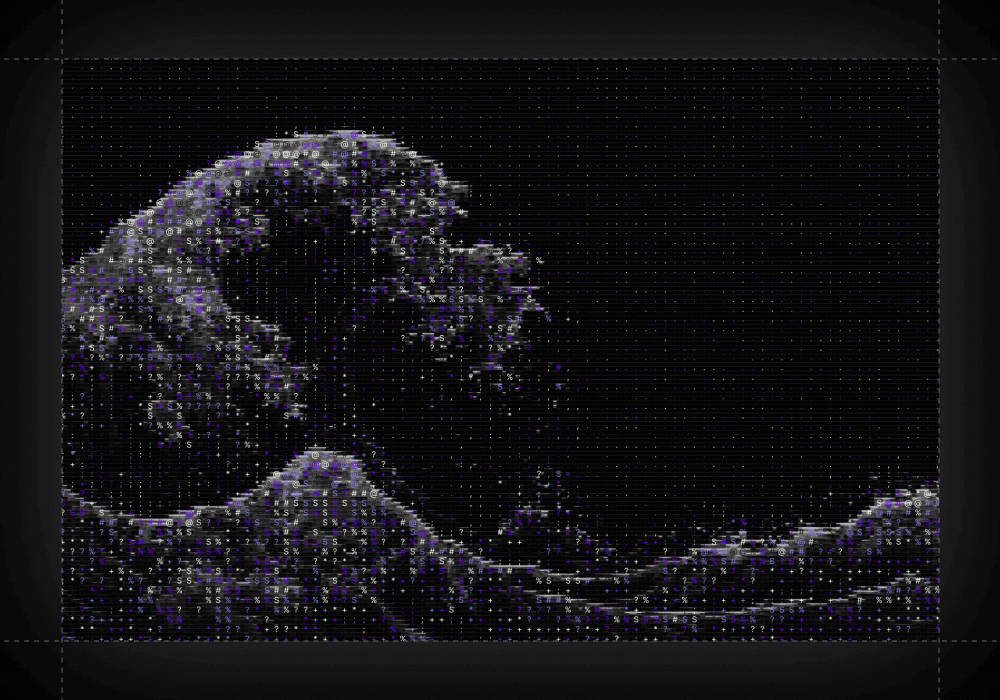8VC Emerging Builders Spotlight: Alec Wang (Opto Investments)

Share

In supporting the industry defining companies of the 8VC portfolio, we are fortunate to work with the brightest, most dedicated people in the world. As we look to identify the next generation of best-in-class entrepreneurs, we naturally turn to our network of peers and friends.
Top engineers might be early in their career, but have often been obsessed with technology and innovation from a young age. They're also better attuned to who are the other top technical minds in their respective cohort! Many of the most important companies we’ve invested in or started won by attracting younger superstar engineers (Palantir, Oculus, Addepar, Qualia, Blend, Affinity, etc).
We’re excited to feature some of the most promising engineering and product talent we have the pleasure of collaborating with not only at 8VC, but within our broader network.
Today, we’d like to highlight Alec Wang, software engineer at Opto Investments, an 8VC Build company that just emerged from stealth. Alec graduated from the M&T Program at the University of Pennsylvania with dual degrees in Computer Science and Finance and a masters in Data Science. Before joining Opto Investments, he worked at Bridgewater Associates as an Investment Engineer.
This is the first of two spotlights for Opto. Be on the lookout for another!
In your words, how would you describe Opto?
Opto is a full-service platform for private investments that boasts a robust suite of offerings, including investment planning, transaction & contract execution, and a key focus on education.
Many registered investment advisors (RIAs) are just starting to dip their toes into the private markets. Given this, there is a significant amount of work that goes into explaining private markets as well as educating clients on portfolio construction for these opportunities and the associated mechanics (e.g. general transaction process, options for liquidity etc.).
Opto is unlocking top-tier investments that RIAs would otherwise not have access to. Opto is able to leverage co-founders Joe Lonsdale’s and Mark Machin’s networks to source the most competitive investments and secure allocations in the best performing funds. This is particularly salient in private markets, where you tend to see significant dispersion across fund managers. Another differentiator is that Opto isn’t just a matching platform - we take on risk ourselves and are aligned in our investments with our clients. We really partner with our clients in answering the difficult and important questions about private fund selection, risk profile, and sector exposure.
In addition to surfacing and diligencing investments, Opto assists with setting up workflow automation to make it easier to go through the tedious process of executing on documents as well as unifying reporting data. Synthesizing this information in a clear manner is critical so RIAs can easily explain to clients conviction around an investment and how performance trends over time. As you can see, we partner with RIAs to deliver on this end-to-end vision.
Why did you decide to join Opto? What are you most excited about?
Given the broader macro environment, there have been many conversations in the investing world about diversifying away from public markets and identifying viable investment opportunities in alternative asset classes. Many institutional investors have seen great success investing in a basket of private market funds and I see the strategy as an attractive balance of rigorous due diligence and broad diversification, two key tenets of successful investing.
I’ve also been intrigued by the mystery surrounding private markets. The investment process is difficult and opaque, and even in sophisticated circles, the data is sparse. I am excited to build tools to improve transparency and streamline workflows for our clients’ private investments. Most of all, I am excited to build a data and analytics platform to help bring the right top tier funds to our clients’ portfolios and help them open up the black box of private markets.
Another quality that drew me to Opto is its appreciation for where technology is an end-to-end solution and where it is instead a powerful source of leverage. While many technologists aim to displace RIAs, the Opto team strongly believes in leveraging technology to empower wealth managers and we’ve aligned our business model and incentives to this goal.
What part of the product and platform do you work on today? What have you learned?
I’m building out our investment data and analytics ecosystem – the reach is pretty expansive but I’m largely partnering with Opto’s investment and advisory services team to determine the necessary analytics to support our investment workflows and answer client questions.
From there, my focus is full stack from evaluating data sources to designing dashboards. If we need to ingest external data sources, I figure out optimal workflows to collect this data and consolidate it into a centralized warehouse with hooks so analysts and engineers alike can conduct the necessary analytical work. I also scope out and build a host of internal tooling to assist the Opto team in due diligence, investment tracking, and portfolio construction.
What new skills have you developed? This is a very cross functional role where you’re engaging with both the engineering and investment teams.
As an Investment Engineer at Bridgewater, I had already gained exposure to a hybrid, cross-functional role and I’ve found that understanding both the investment and technology sides is particularly helpful at a small, fast-moving fintech. At Opto, I’m largely serving as the glue across the engineering and investment practices. I’m able to directly apply past experience to build many systems from scratch and drive a variety of initiatives forward – I’m definitely learning by doing.
Carving out an entirely new ecosystem begins with detailed roadmapping – I prioritize time with our investment team to break down oftentimes manual investment workflows at a granular level to design best-in-class processes for diligence, monitoring, and reporting. I also consult with our advisory services team to understand the most salient client concerns. As we solidify the most critical workflows, I begin to contemplate tooling prioritization, the underlying data we’ll need to harness, where synergies already exist, and then kick off building!
I’m very proud of our culture of rapid iteration and prototyping – we don’t have the luxury to wait months to deliver on new tools and features. As an owner in both the roadmapping and delivery stages, I am obsessed with figuring out how we can extend upon our existing foundation and build modularly.
What does the analyst workflow involve if you want to evaluate private funds? What data do you present to them and how do you ensure it’s easy to grasp? How are these investment decisions made?
We often start at the highest level, contemplating asset class allocation. In public markets, investable opportunities include standard equities, bonds, commodities and REITs. We take this set and extend it to the five private market asset classes we’re investing in and inject analytics at the portfolio construction level. We then develop a perspective around how these different asset classes are performing and how this not only relates to broader portfolio dynamics, but helps achieve client goals.
We continue to peel back the onion, shifting from asset-class level considerations to sub-asset class strategies. For example, within Private Equity, there are growth and buyout opportunities, which represent very different outcomes. Private credit affords investors a significant range of options as well. Our role at Opto is to support RIAs and clients alike in understanding said range of possibilities, taking into account client preferences.
At the level below sub-asset class allocations, we get to selecting individual funds, where the process is very different depending on asset class – the data and models vary depending on asset class and sub strategy. The way you approach analytics for a venture fund is different from PE funds as well as private credit, so we’ve built separate models for each of the asset classes to source and diligence performance.
While we’re obsessed with leveraging data, there will always be a relationship component that should not be discounted. Our leadership team at Opto not only sources the most exciting opportunities, but can unlock access and cement competitive positioning.
What does the fund evaluation process entail?
Once a fund has been identified as of interest, the investment team tends to kick off their evaluation over email with the prospective fund and sets up a preliminary meeting with the fund manager. They’ll often receive fund specs upon introduction and we can upload this initial data into our system, ranking historical fund performance powered by our internal benchmarking tools.
Once we get data room access later on in process, we apply specific analysis based on the respective asset class. We’re continuously improving our ability to compare performance against other funds, which necessitates we develop a large repository. This data set will become incredibly valuable over time as we engage with more funds and can better benchmark.
In addition to analysis of performance, we structure terms, negotiate contracts, and gather references. Prior to making a decision, we like to take a step back and consider how this opportunity fits into our platform as a whole.
What are you excited about on the Opto roadmap?
We’re currently building out the initial skeleton for the Opto platform – I’m excited to see us reach product maturity and leverage the data from our platform to further empower our clients.
While we have built quantitative investment models based on external data, we will be able to greatly improve them as we curate our internal datasets. In addition, we will be able to aggregate what we hear from clients to ensure that we invest in the right funds to meet our clients’ future portfolio needs. This holistic data and analytics effort is quite novel in this space and presents many compelling opportunities.
Consolidating this information for clients to demonstrate how Opto is able to deliver top-tier funds that meet their individual portfolio needs is mission critical and a key part of our value proposition.
How do you think about the future of both retail and HNW individuals coming into early stage venture funds? How do you see directionality and where is demand changing?
Private market maturity is a significant driving force, as high net worth (HNW) clients tend to want to invest as much as they can like endowments and institutions.
It’s worth noting that venture capital is more appealing to individuals versus institutions relative to other asset classes given the high potential upside and strong public narrative. Individuals want to be a part of disruptive technology – if you’re a HNW individual who is not plugged into the financial world, venture is something you can largely relate to in comparison to private credit.
The flipside of venture, though, is that there is very high and persistent dispersion in outcomes between managers. Generally, the top managers continue to be top managers. Investing in average venture vehicles is not a financially solid outcome. Hence, it’s important to get into the top quartile of venture funds relative to other asset classes. This is where Opto’s unfair network advantage becomes incredibly valuable.







.png)




.gif)